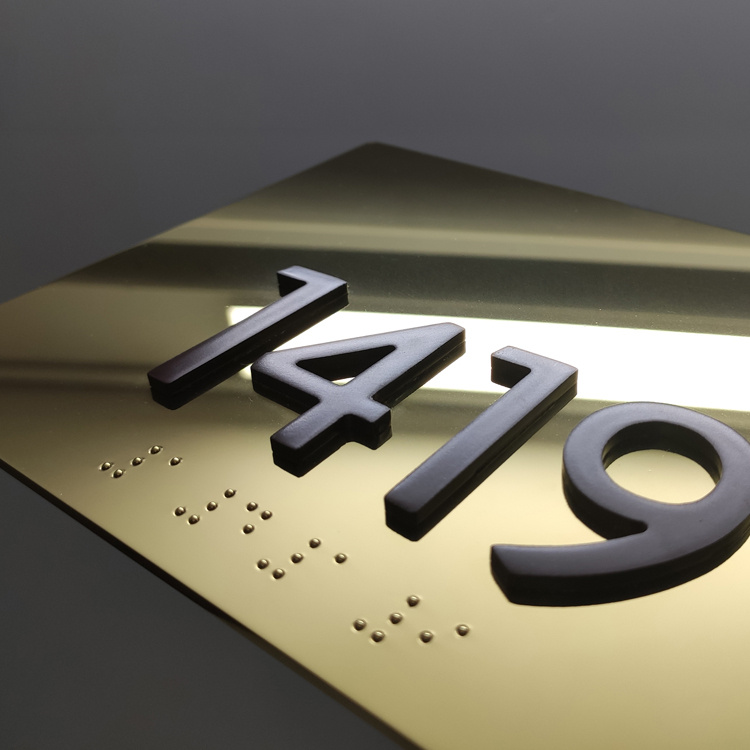Braille Signs | ADA Signs | Tactile Signs
Applications
Understanding Braille Signs
Braille is a tactile writing system developed in the early 19th century by a Frenchman named Louis Braille. The system uses raised dots arranged in various patterns to represent letters, numbers, and punctuation marks. Braille has become the standard for blind people to read and write, and it is widely used in many aspects of daily life, including signage.
Braille signs also called ADA(The Americans with Disabilities Act) signs or tactile signs. They feature raised Braille characters and graphics that can be easily detected and read by touch. These signs are used to provide information and directions to people with visual impairments, making sure they are aware of their surroundings, and can move around safely and independently.
Advantages of Braille Signs
1. Accessibility for People with Visual Impairments
Braille signs provide an essential means of accessibility for people with visual impairments, allowing them to navigate buildings, offices, public areas, and other facilities independently. By providing information in a tactile format that can be felt, Braille signs provide an opportunity for equitable access to information, allowing those without sight to participate in society with more freedom and self-assurance.
2. Safety
Braille signs can also enhance safety, both for people with visual impairments and those without. In emergency situations such as fires or evacuations, Braille signs provide critical information on directional signage to help individuals find the nearest exit routes. This information can also be helpful in regular day-to-day activities, such as navigating through unfamiliar areas within a building.
3. Compliance with ADA Signs
Braille signs are an essential part of an ADA-compliant signage system. The Americans with Disabilities Act (ADA) requires that all public areas have signage that is accessible to people with disabilities. This includes providing signs with tactile characters, raised letters, and Braille.
Characteristics of Braille Signs
1.Materials
Braille signs are typically made from durable materials such as plastic, metal, or acrylic. These materials can withstand exposure to harsh weather conditions and chemicals often found in cleaning products. Additionally, the materials have a high tolerance for scratch resistance caused by everyday wear and tear.
2.Color Contrast
Braille signs typically have high color contrast, which makes them easier to read for people with low vision. This means that the contrast between the background and the raised Braille dots is distinct and easily distinguishable.
3.Placement
Braille signs should be placed in easily accessible areas, within 4-6 feet from the ground. This ensures that people with visual impairments can feel them while standing without needing to stretch or reach.
Conclusion
Braille signs are an essential component of business and wayfinding signage systems, providing high-level accessibility, safety, and compliance with ADA regulations. They provide an opportunity for people with visual impairments to take part in society with more freedom and self-assurance, making their daily lives more independent and comfortable. By incorporating Braille signs within your signage system, your facility can provide better access to information, create a safe environment, and demonstrate a commitment to accessibility and inclusivity.
Professional technical engineer dedicated to guide you
According to your actual needs, choose the most reasonable overall design and planning procedures
